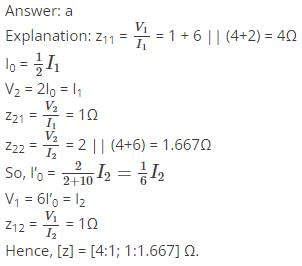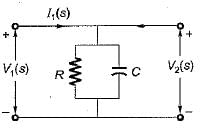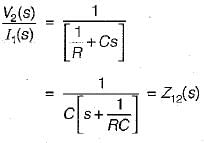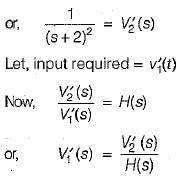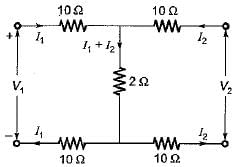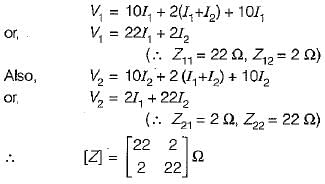Test: Two Port Network - 2 - Electrical Engineering (EE) MCQ
10 Questions MCQ Test - Test: Two Port Network - 2
The two port matrix of an 1 : n ideal transfer is  It describes the transfer in terms of its
It describes the transfer in terms of its
 It describes the transfer in terms of its
It describes the transfer in terms of itsAssertion (A): Simple resistors, inductors and capacitors are linear elements.
Reason (R): The resistances, inductances and capacitances do not change with a change in applied voltage or the circuit current.
Assertion (A): Unilateral elements offer varying impedances with variations in flow of current while bilateral elements offer same impedance irrespective of flow of current.
Reason (R): If the magnitude of the current passing through an element is affected due to change in the polarity of the applied voltage, the element is called unilateral element while if the current magnitude remains the same even if the applied emf’s polarity is changed, it is called a bilateral element
The parameters Z11 a nd Z22 of the given T-network shown below are
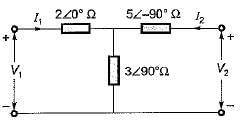
Match List-1 with List-11 and select the correct answer using the codes given below the lists:
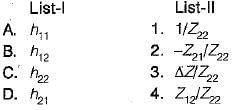

For the circuit given below, the value of the z12 parameter is ___________

A two port network has zero initial conditions. At t = 0; an impulse voltage δ(t) is applied at the input producing a voltage e-2t + e-3t) u(t) volts at the output. If the output voltage required is te-2t u(t) then, the input voltage will be
The Z-parameter of the two port network shown below is given by
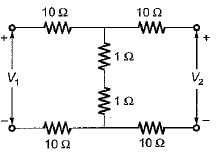









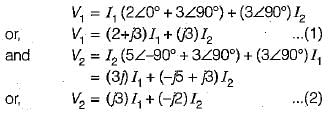



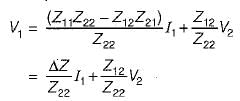 and
and
